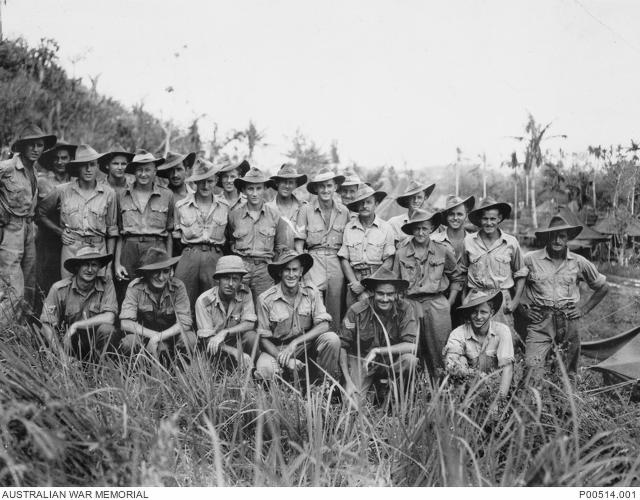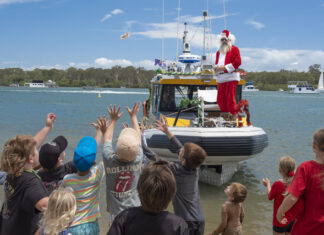Australians are about to celebrate Anzac Day and honour those who fought and died in all fields of conflict, including World War II and the War in the Pacific, which came very close to home.
But very few of us would be aware that a structure in the north Queensland bush which played an integral part in that victory 78 years ago was reduced to rubble in the name of progress back in 1957.
Noosa’s John Mikkelsen was just a kid but he was there the day the ground shook and history was obliterated in the blink of an eye. It’s recounted in this excerpt from his Amazon Books memoir, Don’t Call Me Nev:
There was a loud rumble and the ground shook for a few seconds. Not far from our house, the concrete walls of Stuart Jail suddenly developed a few visible cracks and just a few miles away, some national history was obliterated in the blink of an eye.
Tropical thunderstorm? No, the skies over the bush village were clear. Earthquake? No, but a cloud of dust like a mini A- Bomb rose above the gum trees over to the southeast.
It was just the latest development in a massive land clearing project underway in 1957 to pave the way for construction of Glencore’s Copper Refinery on the outskirts of the small settlement near Townsville.
This was an area I often visited with my best mate Rover, the kelpie cross, and a couple of school pals, because it contained an amazing structure we liked to explore. But we had no idea of its historical significance or why it should have been preserved as a museum piece for the vital role it had played in defeating advancing Japanese forces in the Pacific.
Torches were a necessity to venture inside the old World War II bunker with its three feet thick reinforced concrete walls and roof. Back then, the pitch dark rooms provided all-weather protection for herds of foraging goats, probably the occasional snake or goanna, and the odd adventurous boy. Another roofless underground structure nearby was filled with stagnant green water and dozens of breeding cane toads.
After I heard the explosion that day I decided to go and see for myself what the work crews and bulldozers had accomplished in the open bushland we knew so well. We waited until the workers had parked their heavy equipment and gone home or more likely to the Stuart Pub to quench their thirst after a hard day’s toil under a hot sun.
I hopped on my bike and rode out a few miles with Rover trotting alongside on the dirt road through acres of felled eucalypts and thorny china apple bushes, pushed into piles waiting to be burnt. There was one silver lining in all this destruction, but it carried a sting in its tail. My mates and I had found that some of the felled trees contained bee hives. The native bees provided risk-free honey for the taking, but their larger cousins still protected their hives fiercely, even though they had no chance of survival. Needless to say, we copped our share of stings trying to smoke them out with handfuls of burning grass just to get at the delicious honeycombs.
But I could hardly believe my eyes when I reached the old bunker; or what used to be the bunker and the big underground tank structure. Just large chunks of concrete rubble and twisted steel rods waiting to be loaded on trucks and carted off to God-knows-where.
Sadness gripped me at this latest evidence of the price of progress on our once peaceful boyhood playground. A cement plant had also opened recently, close to the pristine Stewart Creek, and waste slurry was allowed to run off into a gully which flowed into the creek, polluting it for miles downstream with thick, grey deposits. The annual wet seasons and floods removed that and probably distributed it over Townsville Harbour, but in the dry season it would recur.
Maybe the Stuart I knew and loved then was about to change in ways I could only imagine, but as I looked at the piles of jagged concrete and tangled steel reinforcement, I had no comprehension of the significance of what had just been destroyed. The place had a fascinating clandestine war-time history, which I have just learned for the first time more than six decades later.
Quite possibly, it had helped us win the war and if things were different back then, it would probably have been restored to its former glory and preserved as a lasting memorial within the boundaries of the copper refinery. The refinery owners, Glencore, have also recognised its significance and belatedly erected a plaque in its place.
Back in March 1942, three years into World War II, the secret bomb-proof bunker was constructed where the Townsville Copper Refinery now stands. It sheltered skilled Katakana (Kana) wireless operators providing essential intelligence which certainly contributed to Victory in the Pacific. Kana was a radio code based on Japanese writing.
The Kana wireless operators intercepted Japanese messages to obtain vital intelligence informing the Allies of the timing and location of planned Japanese attacks..
Walls of the bunker were made of solid, metre-thick, reinforced concrete and the building was camouflaged to resemble a Queenslander farmhouse. Outside walls were painted to replicate windows and doors, with a verandah and stilt posts completing the disguise. There was also a false roof, and rainwater tanks. A set of stairs led to a fake front door and the scene created could have fooled anyone passing even close by, let alone enemy air reconnaissance.
The bunker was also fully air-conditioned, a rarity back then. It was reportedly a highly functioning set-up featuring sophisticated equipment such as plotting and cipher tables, maps, typewriters, telephones, radio receivers and even teleprinters, all of which helped decipher the Japanese wireless codes to inform Allied forces.
But about 12 years after the war ended, the bunker was demolished to make way for construction of the Copper Refinery. In Glencore’s own words, it was obviously built to last, with a sizable quantity of gelignite required to bring it down. The force of the resulting explosion reportedly caused cracks in the outer walls of Stuart Creek Jail, several kilometers away. And thus, the former wartime headquarters of No. 1 Wireless Unit, one of two highly secret Allied Sigint (signal intelligence) organisations in the region, was consigned to history and oblivion.
In 2009, during the refinery’s 50th anniversary , the old bunker’s location was commemorated and the site identified with a plaque.
Who’d have guessed it? Not this kid, back on the day it was reduced to rubble! I hope they chased the other goats out before they blew it up.
John’s book can be found at amazon.com.au/John-Mikkelsen/e/B09RF3SNBD/ref=aufs_dp_fta_dsk








